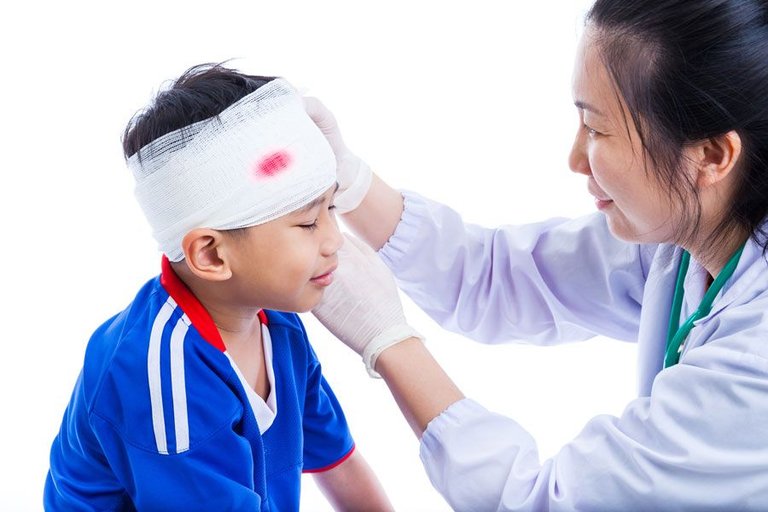What to do if my child hits a blow on the head is one of the most common concerns among parents, and is that children are curious and explorers by nature, which can sometimes lead to falls and unexpected blows. Even if the child is not especially naughty or several preventive measures have been applied, it is often inevitable that accidents occur.

Warning signs after a blow to the head in children
It is understood by 'common accidents', all those cases in which an impact occurs, from low height or without speed. Therefore, all the small trips, falls and light blows fall into this group.
In common accidents, almost always the shock is greater than the injury itself. In general, they only produce pain of low intensity, a bump and, in some cases, some superficial wounds (bruises, rubs, scratches).
However, before a strong blow, a fall of more than one meter in height or when any discomfort persists and increases in intensity, it is important to go to the pediatrician as soon as possible. In children, these are some of the warning signs after a blow to the head:
Loss of consciousness.
Sinking in the area of the coup.
Blurry vision.
Repetitive vomiting
Asymmetry in the pupils.
Alterations of speech.
Change in mood
Lack of coordination when moving.
Ensimismamiento (does not respond adequately to stimuli).
In case several warning signs are noticed, it is necessary to avoid the mobilization of the neck of the child, in case it has associated a trauma in the neck. Also, it is recommended to see the doctor immediately to assess if a head injury has occurred.
What to do if my child hits a blow on the head?
The first thing we should do is calm the child. Regardless of whether they are no longer very young, it is very important to make them feel safe and cared for, as they will calm down, leave the incident behind and relax.
Now, with regard to physical care, you should:
- If a superficial wound has been produced, it must be washed, disinfected and bandaged.
- In case the child is less than 5 years old, it is convenient to take him to a place with few auditory and visual stimuli, so that he can calm down more easily.
- Monitor the child in the 24 to 48 hours following the blow to make sure he does not show any of the warning signs mentioned above.
Most of the blows on the head are nothing but a fright for the child and the parents, however, it is always important to remain calm, take care of the child's injury and try to relieve him, as well as making sure that there are no possible signs of alarm and go to the doctor or pharmacist if there is any doubt.
It's fabulous not just strong!